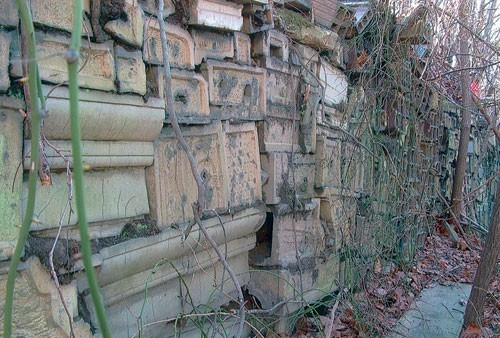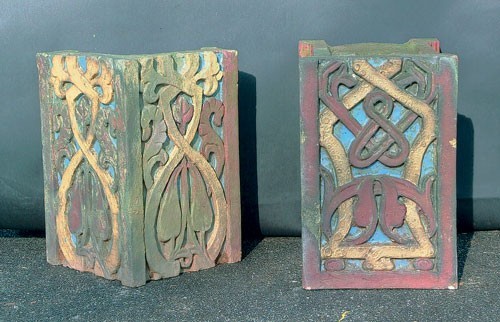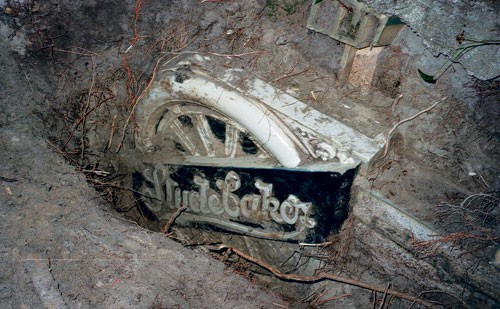
Photograph, South Amboy Terra Cotta Company, South Amboy, New Jersey, early twentieth century. This view faces east; note the kilns and the stacked blocks of architectural terracotta. Unfortunately, the “Great Wall of Terracotta,” which supports the sand hill from which the photograph was taken, is not visible. (Courtesy, Middlesex County Cultural and Heritage Commission.)

A small portion of the “Great Wall of Terracotta” showing dozens of stacked blocks of architectural terracotta. These pieces were laid flat during the construction of the wall. They display a lime-green glaze and were made in a storefront Gothic style. The entire facade of the building might have been stacked here. (Unless otherwise noted, all photos by Richard Veit.)

View of the retaining wall showing the carefully stacked blocks. A luxuriant growth of brambles and poison ivy helped protect the wall and hide it from the prying eyes of visitors.

Two terracotta blocks like those shown stacked in fig. 2. Each is three feet high. Note the hollow back of the piece at right, which displays marks left by the modeler’s hands during manufacture.

Two examples of polychrome-decorated red terracotta. Each is three feet high. Note the uneven glazing on the piece at left, perhaps the flaw that led to these pieces being discarded. The design, intertwined vines, looks vaguely Celtic.

The Studebaker emblem discovered during salvage excavations. Presumably it was made to grace the showroom of a Studebaker dealership and is an exceptional example of polychrome terracotta. (Photo, Peter A. Davis.)
